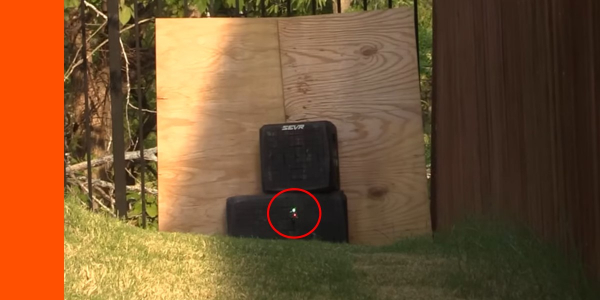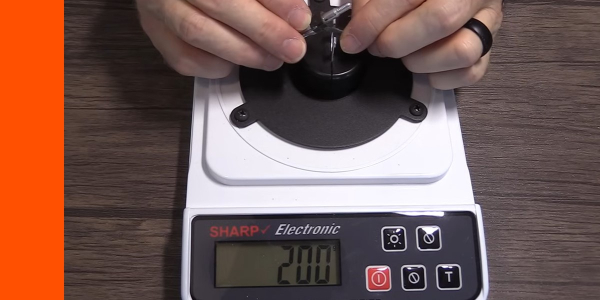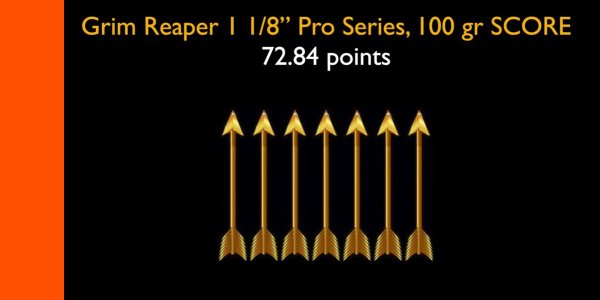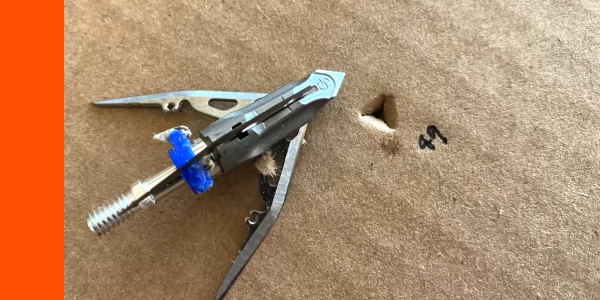For hunters seeking a variety of animals and a thrilling big game hunt, Africa is the undoubtedly one of, if not the, best destination out there.
Every region of Africa offers unique opportunities for big game hunting. The enticement lies in the challenge of tracking and pursuing species such as lions, elephants, leopards, buffalos, and rhinos, among others.
As these are animals that you may not have the opportunity to hunt anywhere else, a big game hunt in Africa can certainly provide you with a once in a lifetime experience!
South African Game

The big game hunting opportunities are plentiful in the continent of Africa, however, it’s a vast continent, so where should you start? (photo credit: whatarethe7continents.com)
Keeping in mind that Africa is an immensely large continent, you may find it overwhelming to make a choice when it comes down to choosing a particular destination. With that being said, many hunters have been drawn to South Africa in particular.
South Africa accounts for a large majority of the big game hunting preserves in Africa. These South African hunting preserves offer up rare and highly-sought after species of game to hunters daring enough to make the trip.
Due to this region being such a hub for big game hunting, interested parties may find that accommodations for hunting trips can be made much more easily than in other places.
South Africa’s Best and Biggest Species | The “Big 5”
One of the biggest attractions to South African hunting safaris is the chance to hunt “The Big Five.”
Lions, leopards, cape buffalo, elephants, and rhinoceros are the five species that dominate big game hunting in South Africa. These are the animals that certainly offer hunters the exhilarating hunt they are seeking.
Below, we’ll delve into the individual details of Big Five hunting.
Lion

Due to it being the largest cat in Africa, a lion is considered an extremely significant trophy, and taking one down is a huge accomplishment.
A hunter pursuing a trophy Lion must be extremely careful, and approach the hunt with all the necessary precautions.
Lions are dangerous creatures, especially when they are provoked, and can be potentially more dangerous when they are wounded. Additionally, lions travel in packs (a group of lions is called a “pride”), so there is a possibility that other members could get involved.
The trophy quality of a lion is determined by the age, mane, and size of the animal.
To use an example, a larger male with a resounding mane is regarded as the a top trophy for many hunters world-wide. Finding a trophy lion like this can be very difficult, but they can be found throughout the savannah, grasslands, and semi-desert areas regions of Africa.
Leopard

Leopard hunting is one of the most difficult ventures in big game hunting, mostly because they are so elusive and intelligent, as well as extremely dangerous.
When it comes to this next big game animal, all bets are off. When it comes to taking down a leopard, the most tried and true hunting method is baiting.
The process of baiting can be a bit grueling, in that it requires an extreme amount of patience, as hunters may wait and observe the bait for countless nights without a single leopard sighting.
Now, a less common, but likely quicker, method of hunting leopards is with the use of hounds. This tactic is ideal for hunters looking for an extra thrill, as you can avoid the waiting involved in baiting and actively pursue a leopard with the help of man’s best friend.
#ad
Cape Buffalo

Cape buffalo are quite large and bulky animals, making them a highly desirable target. They have heavy legs, which help to support their large body and the extra mass found in their heads and necks.
Even with their large size, cape buffalo can be quick and agile on their feet, making them a tricky target. Additionally, they are a grayish-black color, so they often blend in with the mud they wallow in.
Given how massive they are and their ability to camouflage themselves, cape buffalo make for quite the difficult hunt. But, the challenge entices hunters to overcome it, which is why Africa has become one of the leading big game destinations in the world.
Elephant

Another one of Africa’s most coveted big game species is the elephant, and trophy status involves weight, size and their tusks.
When it comes to determining what exactly contributes to the trophy quality of an elephant, one must look at the weight and size of the elephant, as well as the ivory of their tusks. Typically, good ivory is considered among Africa’s top hunting trophies.
The classic hunting technique for elephants is tracking them on foot. You’ll spend your time looking for fresh tracks, tracking them through the dense savannah, and then finding an angle for the perfect shot once finally find your target.
Getting into close quarters with an elephant to determine trophy quality is normal practice, and ultimately taking a good bull can be extremely challenging.
Elephants have sensitive smell and hearing, so you must pay attention to things such as wind direction when stalking.
Due to an elephant’s habitat, shots on these animals are typically taken at close range, as elephants are typically found in areas ranging from the desert to the dense savannah with high rainfall.
>Get more great hunting and fishing hats HERE!<
Rhinoceros

Rhinoceros are the second largest land animal in the world, and have traditionally been one of the most coveted animals for big game hunters.
Throughout history, rhinos have been hunted and poached to extremely low population levels, but thanks to the efforts of conservationists, white rhino numbers have bounced back significantly. Unfortunately, the black rhino is still a protected species, and so their hunting permit requirements are much stricter.
Because of the sheer size of rhinos and the stringent hunting regulations attached to them, be sure to book with an outfitter that has a good reputation in regard to big game hunting, and that also knows the ins and outs of the law.
New Popular Types Of Big Game
In recent years, the Big Five has extended to the “Dangerous Seven,” which includes the addition of the hippopotamus and the crocodile.


In addition, “plains game hunting” has also become the most common type of big game hunting, due to it being more affordable and accessible than the Big Five.
Plains game include species such as giraffe, zebra, spiral horned antelope, wildebeest, among others.




Taking the Trip of a Lifetime | Major Things To Consider
As exciting as a South African hunting trip is, there are countless factors that must be taken into consideration. Choosing the game you would like to hunt is just the first step. Everything from travel arrangements to travel insurance must be arranged before any shots are taken.
As with any other trip, you need to make almost all preparations in advance. This is essential for a huge journey, considering most hunters will be traveling internationally for a big game hunt in Africa.
If you want your big game hunting trip to go smoothly, you’ll want to do all the necessary research and iron out all the details you might not be 100% certain about.
Below are some key factors to consider when organizing your hunting trip of a lifetime:
Location

The provinces of South Africa all provide various big game hunting opportunities, with Limpopo and Eastern Cape being two of the most popular. (photo credit: southafrica.to)
In South Africa, hunting is readily available in the following nine provinces:
- North West
- Eastern Cape
- Western Cape
- Northern Cape
- Limpopo
- Free State
- Gauteng
- Mpumalanga
- KwaZulu-Natal
As you can see, you have plenty of options to choose from of when selecting your hunting destination.
The most popular areas listed above are Limpopo and Eastern Cape, with the other options still boasting amazing hunts and beautiful big game. Still, location popularity will likely not determine where you’ll be hunting, but rather what animal you will be looking to harvest.
Cost
Many hunters incorrectly assume that hunting in South Africa is more expensive than it really is.
In fact, an all-inclusive hunt for several species of plains game cost about the same as an elk hunt in the U.S.
When calculating the cost of a big game hunt (with the exception of some specialty hunts that have very niche requirements), the following will be everything you need to consider:
- Travel arrangements
- Trophy fees
- Daily hunting rates
- Taxidermy and shipping
- Fees associated with lodging/stay (food, ammunition, etc.)
Skill
Keep in mind, big game hunting is an extremely physical commitment. You’ll want to be well prepared for the hours of walking and stalking that will likely be involved.
It’s imperative that you be in good and healthy physical shape, because you never know when you will find yourself in a life or death situation.
Additionally, it’s advisable that you be a seasoned hunter for a hunting venture such as this. Not only can big game hunting be physically demanding, but dangerous as well. You don’t want to arrive ill-prepared and in over your head.
Availability
South Africa has a warm, moderate, and dry climate, which is ideal for big game hunting.

Generally speaking, the big game hunting season in South Africa typically runs from the early Spring to mid-late Fall. With that being said, some of the most preferred hunting months for most South African species fall in the Summer months, with the prime hunting weather being a strong influence.
Now, looking at what works best for you, the best indication of when you should plan your hunt really comes down the type of game you are looking to hunt or any restrictions or limitations you may have, such as budget or time availability.
No one hunt is perfect for everyone, but everyone has that one hunt that is perfect for them, it’s just a matter of doing the research!
Making Your Choice
As we’ve expanded on, there is plenty to consider for a hunting expedition in South Africa. Still, what it all really comes down to is what’s going to work best for you and what your ideal hunting experience is, as well as what you can afford.

As overwhelming as that may sound, it’s also incredibly exciting. Just make sure that you are working with a guide who you can trust and that you know is familiar with the area and the game you are hunting.
Types Of Big Game In Africa | Plan Your Hunt Today!
Big game hunting is a deeply satisfying sport enjoyed by thousands. A hunting expedition in South Africa can be a life-changing and rewarding experience.
To ensure the success of your trip, you’ll want to have a plethora of knowledge on all things related to the hunt. After taking the time to read through this guide, you’re already off to a great start!









![[2023 NEW] 7-8 Fireproof Biometric Gun Safes for Home Rifle and Pistols, Heavy Duty Anti-Theft Long Gun Safes for Rifles and Shotguns with 3 Handgun Pocket, Removable Shelf, Silent Mode](https://m.media-amazon.com/images/I/51hfDt086lL._SL500_.jpg)
























































